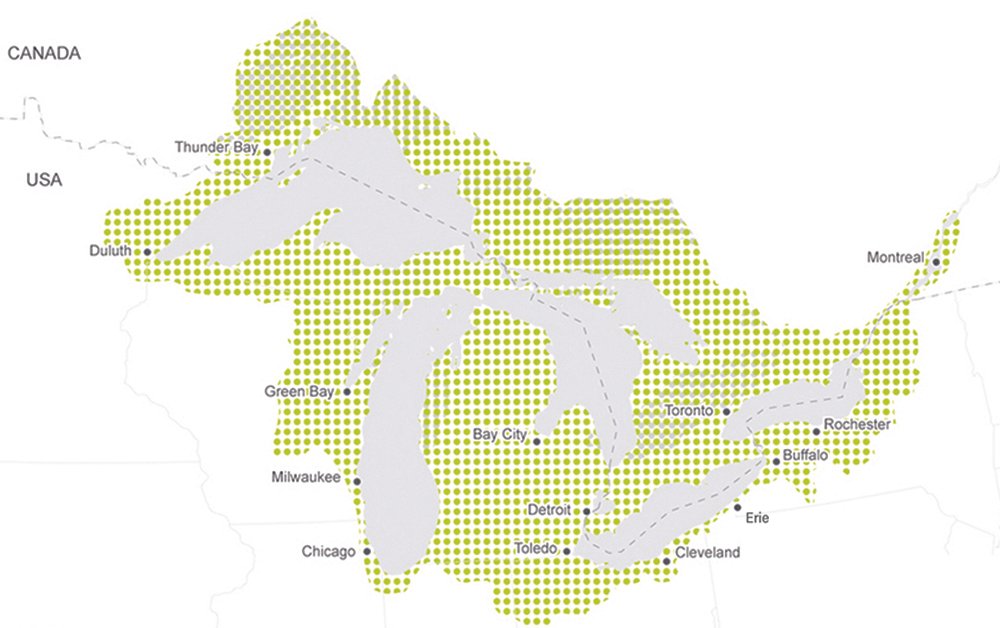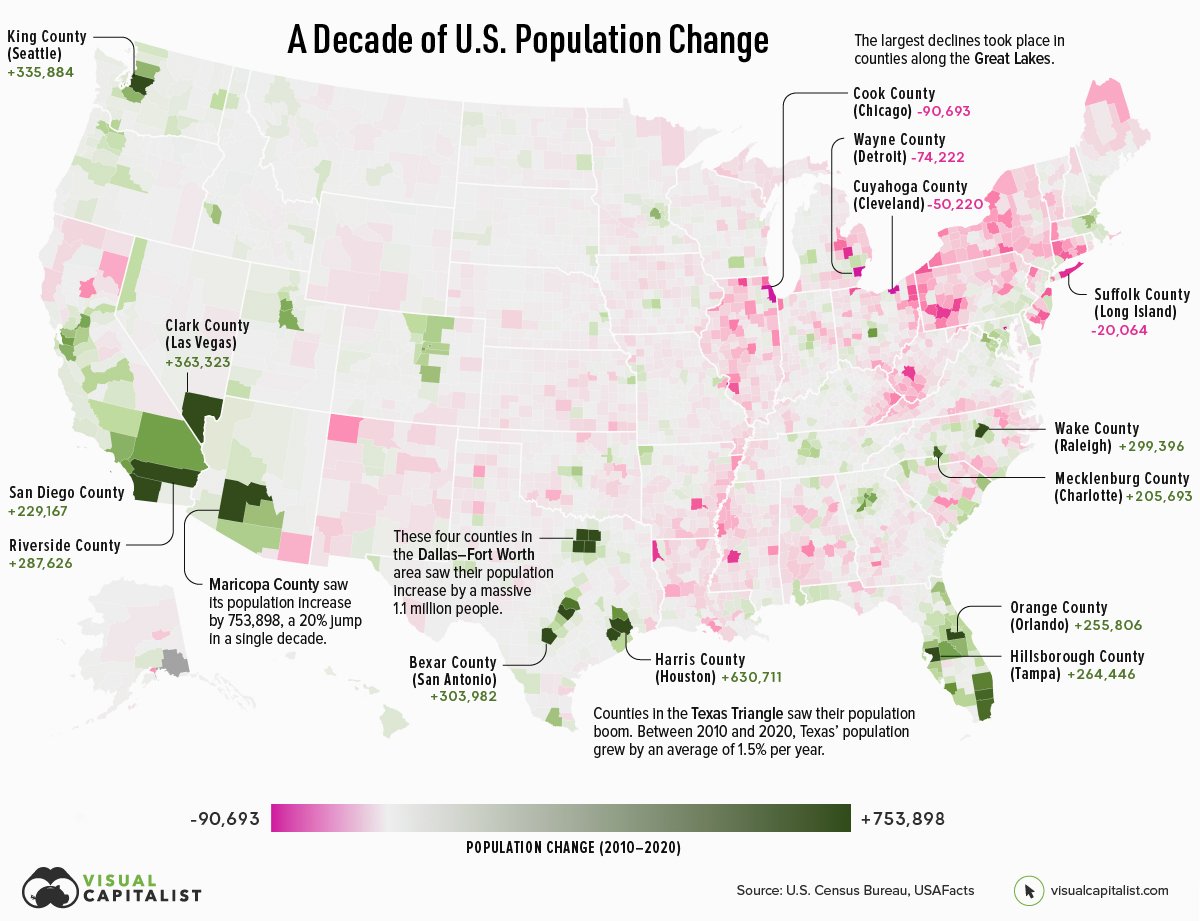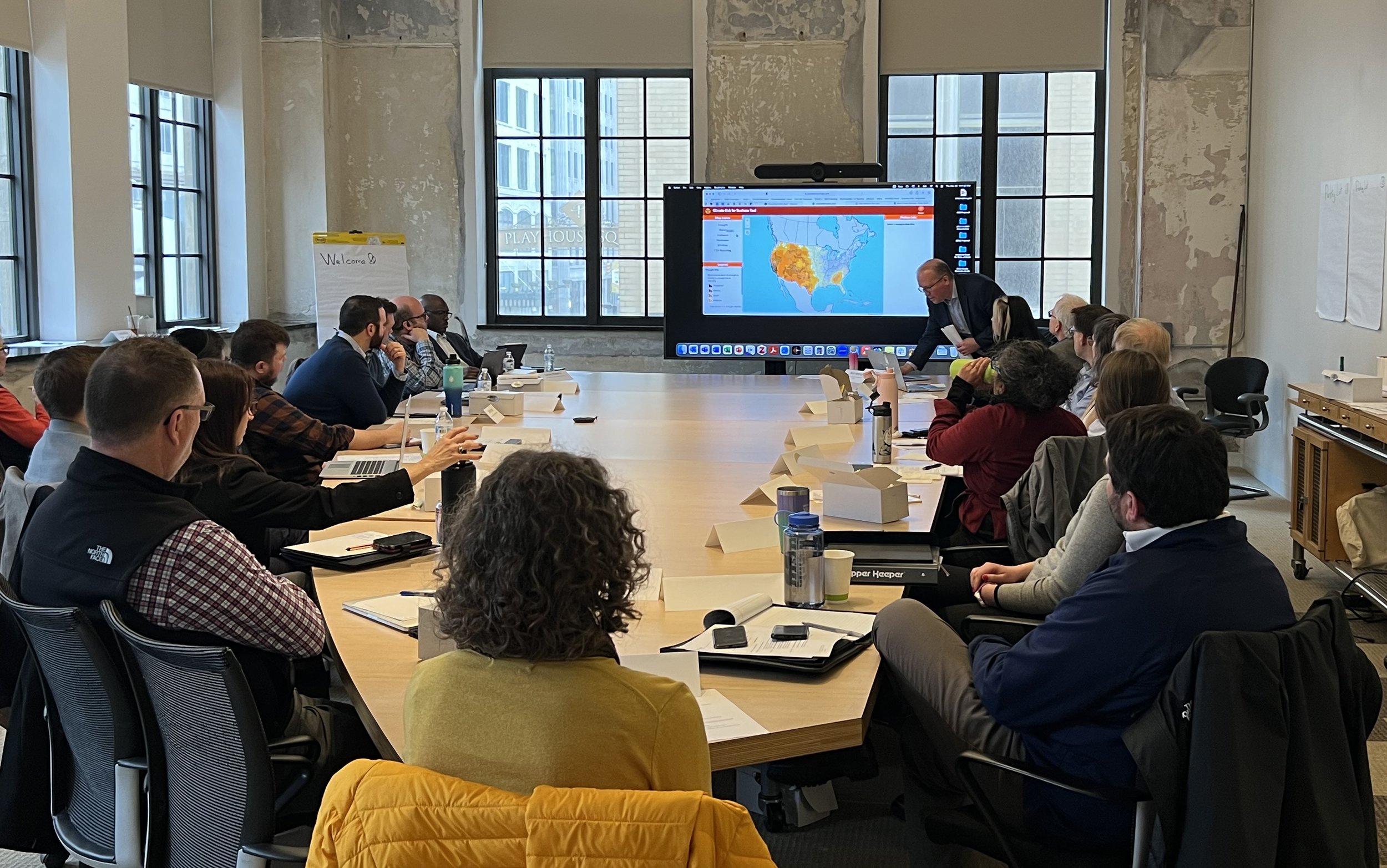The impacts of climate change could displace many people in some regions of the United States. Cities in heavily impacted areas could lose residents and tax revenue as people relocate to safe havens. Other cities will receive displaced people, perhaps suddenly and without warning, in the wake of a climate disaster. There is a pressing need to prepare for these population shifts in an organized and equitable way.
Great Lakes cities have already experienced periods of population growth and decline. The Great Migration, from 1910-1970, was one of the largest movements of people in U.S. history. Approximately six million Black Southerners moved to cities in the Northern, Western, and Midwestern parts of the US to escape racial violence and pursue economic and educational opportunities.
Many people moved to Detroit, Cleveland, Buffalo, and other cities in the Great Lakes where industrial jobs were plentiful. As deindustrialization took hold in the 1970s and 1980s, these cities lost residents and businesses—a pattern that persists to the present day. However, the Great Lakes region may begin to experience climate-related in-migration as people rediscover the area’s stable climate, abundant fresh water, and available land.
Long-predicted climate concerns are becoming a reality–with heat waves gripping the southern and southwestern parts of the country, flash flooding inundating cities on the East Coast, wildfires raging in Canada, and a rapidly warming ocean setting the stage for destructive hurricanes in the Gulf Coast. As Al Gore recently noted, “Every night on the TV news is like taking a nature hike through the Book of Revelation.”
And yet, the population continues to grow in high risk areas of the country, while many Great Lakes cities are still losing population. How difficult will conditions need to become before national patterns of population growth and decline begin to change? Will the revitalization of Great Lakes cities be inextricably linked to climate disasters in other parts of the country?
Cities facing severe climate risks continue to grow, while many of the relatively stable and temperate cities of the Great Lakes are losing population. (Source: Visual Capitalist)
If Great Lakes cities begin to attract new residents, what factors will motivate people to move and when might this happen? Will in-migration bring jobs, ideas, and money to help revitalize the Great Lakes region? Will new residents displace people who are already here? Will population growth be concentrated in existing cities, or will it result in an expanded development footprint in suburban and rural areas? How will in-migration affect the ancestral claims of Indigenous people on the land and water of the Great Lakes basin?
Diagram exploring four climate migration scenarios, looking at possible outcomes if Cleveland experiences moderate or severe climate impacts, in a context of future population growth or decline.
In an effort to spark conversations about these and other questions, the CUDC and the University at Buffalo partnered to produce a guide to scenario planning for climate migration in Great Lakes cities. The guide aims to assist Great Lakes cities in making climate-responsive land use decisions, planning for population gains and losses, and developing scenarios about where to focus future development and where to protect land for green space and green infrastructure.
Download the Guide to Scenario Planning for Great Lakes Climate Migration
In March of 2023, the CUDC hosted a half-day climate migration workshop to explore future migration patterns in the US and the climate-related forces that may drive people and businesses to Northeast Ohio. The workshop was sponsored by the Lincoln Institute of Land Policy (LILP) and the Urban Institute in partnership with the Cuyahoga County Office of Sustainability, the University at Buffalo, and the CUDC.
Climate migration workshop at the Cleveland Urban Design Collaborative, 23 March 2023.
Twenty-three people participated in the workshop including local government representatives in land-use planning, water and sewer infrastructure, sustainability, emergency services, and land banking. Nonprofit and philanthropic organizations participating in the event included the Cleveland Water Alliance, the Cuyahoga County Land Reutilization Corporation, the Cleveland Foundation, and the George Gund Foundation. Regional agencies, including the Northeast Ohio Regional Sewer District, the Northeast Ohio Areawide Coordinating Agency, and Dominion Energy also participated.
Following the principles of XSP, the workshop considered a range of possible scenarios rather than focusing on a single preferred vision of the future. XSP helps communities navigate uncertainty and prepare for a variety of outcomes that could happen, without knowing specifically what will happen. The XSP process is useful for discussions about climate change and climate migration since these issues involve many unknown factors.
Group exercise at the climate migration workshop exploring development scenarios for climate-driven population growth or decline in Cuyahoga County. Scenarios explore where future growth would be concentrated on vacant sites within the existing urban footprint, or at the periphery of the region.
Workshop participants discussed current and anticipated climate challenges in Cleveland and Cuyahoga County, as well as opportunities for attracting climate migrants to the Northeast Ohio region. The conversation did not begin from a preconceived position that Cleveland is destined to become “climate haven.” Although the impacts of climate change in Northeast Ohio may be less severe than in other parts of the US, Cleveland and Cuyahoga County are not immune to the effects of climate change. Workshop exercises encouraged participants to consider a range of scenarios and grapple with the uncertainties inherent in climate change and climate migration.
The half-day workshop format was not enough time for participants to delve into all the issues related to climate migration. By incorporating mapping exercises into future workshops, more site-specific scenarios for climate migration in the region might emerge. Expanding the workshop to a full-day event or conducting a series of sessions spread over weeks or months, could yield more comprehensive and detailed outcomes.
The CUDC and project partners prepared a case study documenting the process and outcomes of the workshop. The case study also includes a range of topics that were not addressed in the workshop, but could become part of future research into the promise and perils of climate migration into the Great Lakes region. These topics include: mapping and geospatial analysis for climate migration planning; understanding the timeframe in which climate migration might take place; aligning the forces that push people from one community and pull them toward another; adaptive management approaches; and regional collaboration to prepare for a changing climate.





